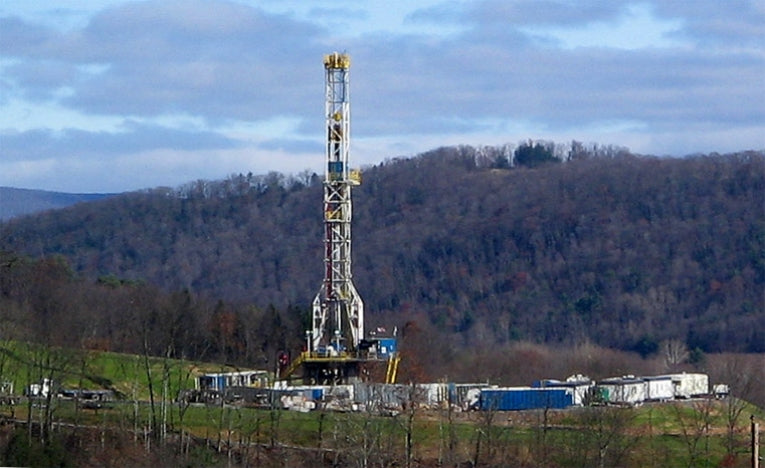Shale Gas is the new energy buzzword. It is ''unconventional gas'' produced from within rocks by utilising technological processes commonly called ''fracking'' which means chemically extracting the gas. In America it has suddenly become a big story: since 2000, shale gas production has leapt from being only 1% of US gas production up to 20% in 2009.
Shale Gas promoters, like Nick Grealy of No Hot Air believe that Shale Gas will be a new, relatively low-carbon fuel of the future which will help the world surmount its energy problems. ''It has game changing potential,'' he says. Shale gas fields in the USA include large finds in Tarrant County, Texas, and the Marcellus Shale formation in Pennsylvania.
Shale Gas is identical to Natural Gas (methane). The gas is normally extracted by a combination of horizontal drilling and hydraulic fracturing - 'fracking' - with chemicals and water to move the gas to the wellhead where it can be piped out form delivery to the customer. The US's expertise in drilling for onshore oil and gas and existing exploration data gave a boost to the industry, which made Shale Gas an exciting proposition for energy companies. Soon the big players such as ExxonMobil, Statoil and Shell were buying up or investing in the shale gas corporations. Outside the US there are estimated to be significant shale gas reserves.
If this is proved correct then much energy generation could be moved away from the worst fossil-fuel, coal, and towards cleaner gas. In the UK Nick Grealy estimates if coal was replaced by shale gas it would save 30% of all UK carbon emissions by 2020. However conditions in Europe from both a legislative and a practical point of view, are different. Underground resources usually belong to the state, not the landowner, as in the US, and the gas is less accessible geographically, together with a considerably higher population density makes onshore drilling more problematic.
Professor Paul Stevens, of British thinktank Chatham House, says, ''There is no question that shale gas has the potential to transform the energy scene and to be a possible game-changer, but whether this potential can be realised requires answers to two questions: can the shale gas revolution continue in the United States, and can this revolution be replicated elsewhere?''
In answer to these questions he suggests that low gas prices in the US are compromising existing projects and threaten investment in future ones, there are also concerns about the environmental consequences of ''fracking'', although he thinks that the issue of energy security means that shale gas will continue to be extracted in the USA, especially with the political muscle of the big oil companies behind it. He continues, ''The answer to the second question, as to whether it can be replicated elsewhere, is problematic. In Western Europe the shale plays are smaller, deeper, and have greater clay content which is a significant factor if you are fracturing to extract them.''
He contrasts the lack of exploration data and smaller potential drilling areas in Europe compared with the USA. As Europe is heavily populated, shale gas activities ''are potentially disruptive to local communities,'' and as mentioned above, the legal position is different. These are barriers that the technology faces in Western Europe. Other parts of the world like China, which has huge shale gas resources and lower environmental standards, will be more likely to make use of shale gas's potential than Western Europe.
Photo of Tower for drilling horizontally into the Marcellus Shale Formation by Ruhrfisch
Links:
The 'Shale Gas Revolution': Hype and Reality










